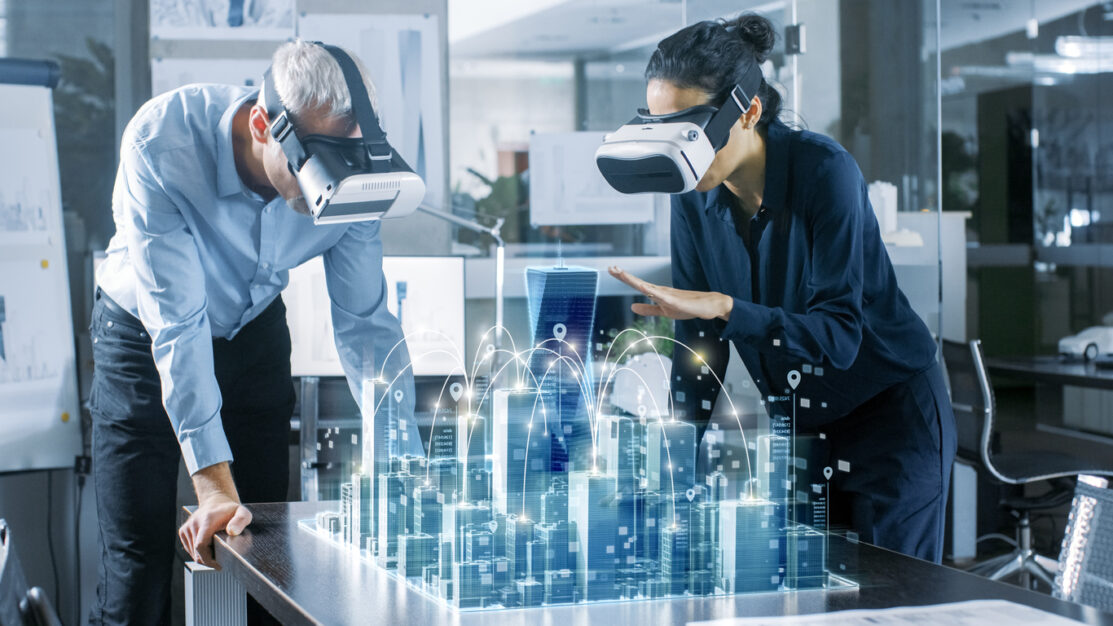Virtual Reality Saves Construction Big Bucks
CREtech Blog

The World Economic Forum study reports digital technology–including augmented reality (AR) and virtual reality (VR)–could save the construction industry up to $1.7 trillion (USD) globally within 10 years. Adopting these technologies are crucial to the industry’s future success. VR and AR technology adds advantages to every stage of developing a new property.
#1- Building Information Modelling (BIM)
VR and AR applications start early in the project lifecycle with BIM. The technology assists architects, developers, and stakeholders with seeing the building’s potential. Many people struggle to translate 2D floor plans into a 3D image. VR’s immersive environment allows the project stakeholders to step inside a structure that doesn’t exist yet. End users see potential product and say, “Hey, this electrical socket doesn’t belong here! It needs to go over there!”
This vital data saves on expensive rework and design. It’s easier to modify a virtual building than an existing one mid-build.
#2- Enhanced collaboration
Construction projects are never completed in a vacuum. Project managers work with contractors, subcontractors, stakeholders, and regulatory supervisors at different phases of a build. VR improves project collaboration. The immersive environment stimulates discussion about the build. 360-degree cameras can capture progress as the project proceeds to provide updates to the distributed teams.
Augmented reality is especially useful for site crews. When equipped with AR glasses, workers view real-time instructions on the required tasks. This minimizes wasted time and materials. AR works for consulting experts, too. The Daqri helmet helps off-site managers see problems from the wearer’s point-of-view and allow them to assist working through the issue.
#3- Reduced Rework
Project managers and construction teams do what they can to avoid expensive and timeline-busting rework. VR and AR technology improves the chances teams will finish the build with minimal rework.
This example is illustrated with Skycatch’s drone and VR modeling. On a construction project in Japan, Skycatch found a problem on the first day of its use. In comparing its gathered imagery against the site model, the system found a $400,000 misaligned concrete slab. If construction had been allowed to continue, the mistake easily could have ballooned construction costs depending on what phase of construction the problem became apparent.
#4- Better Decision-Making
As a result of VR and AR’s application in building modelling, collaboration, and construction, construction teams increase decision-making speed. The spatial experience reduces misinterpretation as it shows what the end product should look like. Notes left in AR clarify any questions site crews have about the task at hand. This helps construction teams cut the time to deliver a finished product.
Add these reasons together, and VR and AR application adoption will save teams from unnecessary expenses in the construction process. The tools reduce expensive rework, clarify the end goals from the beginning, and reduce material waste.
